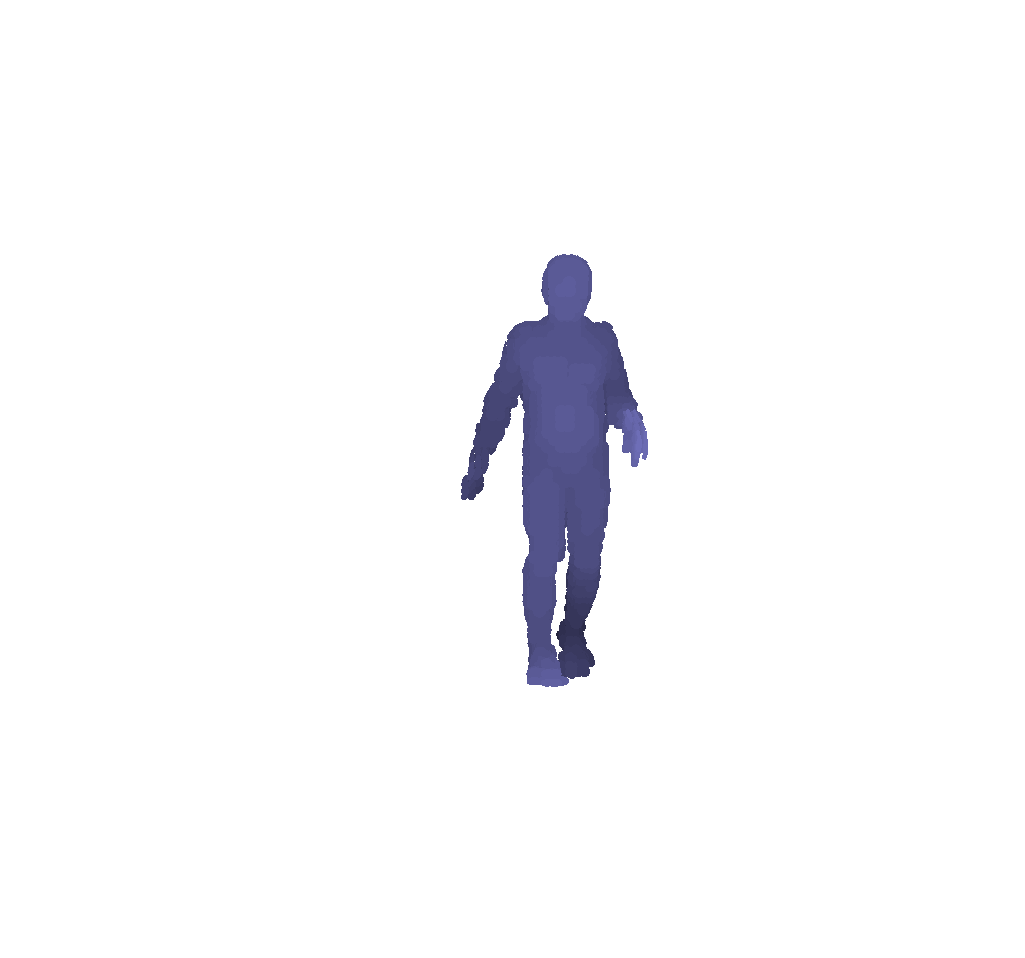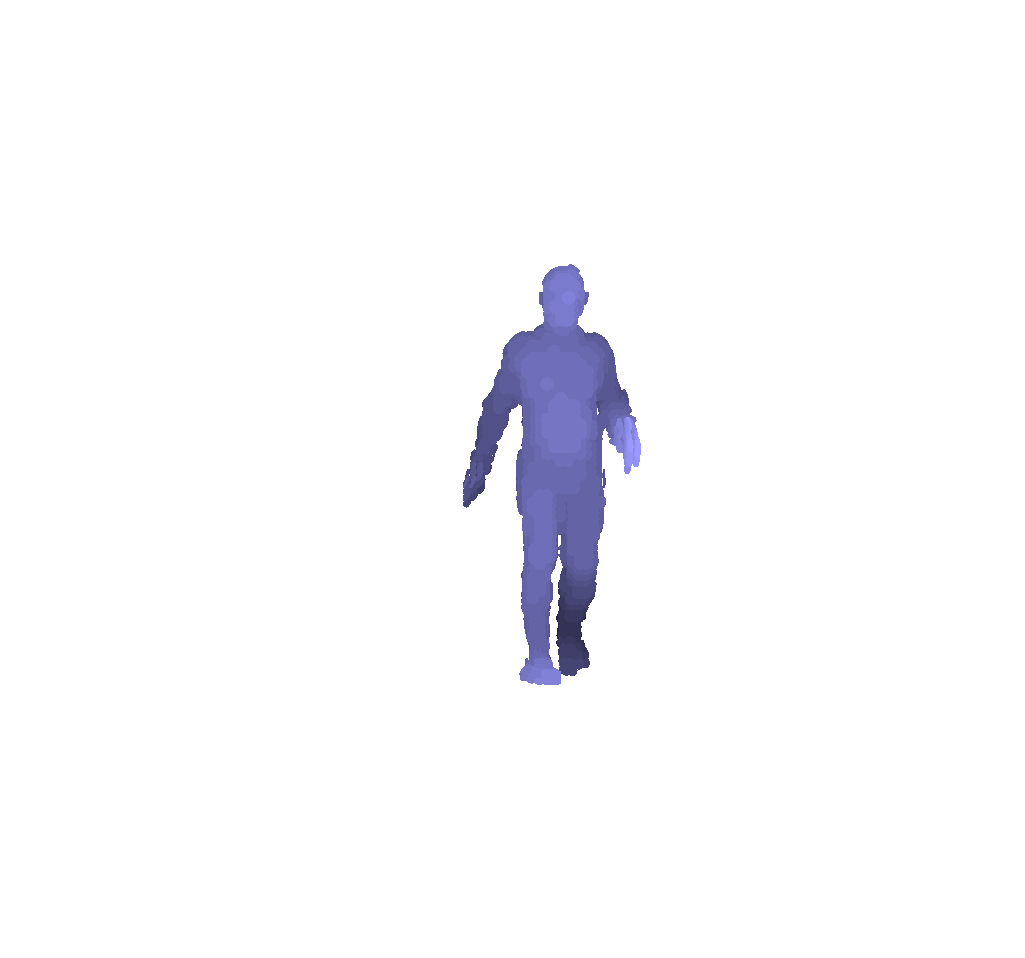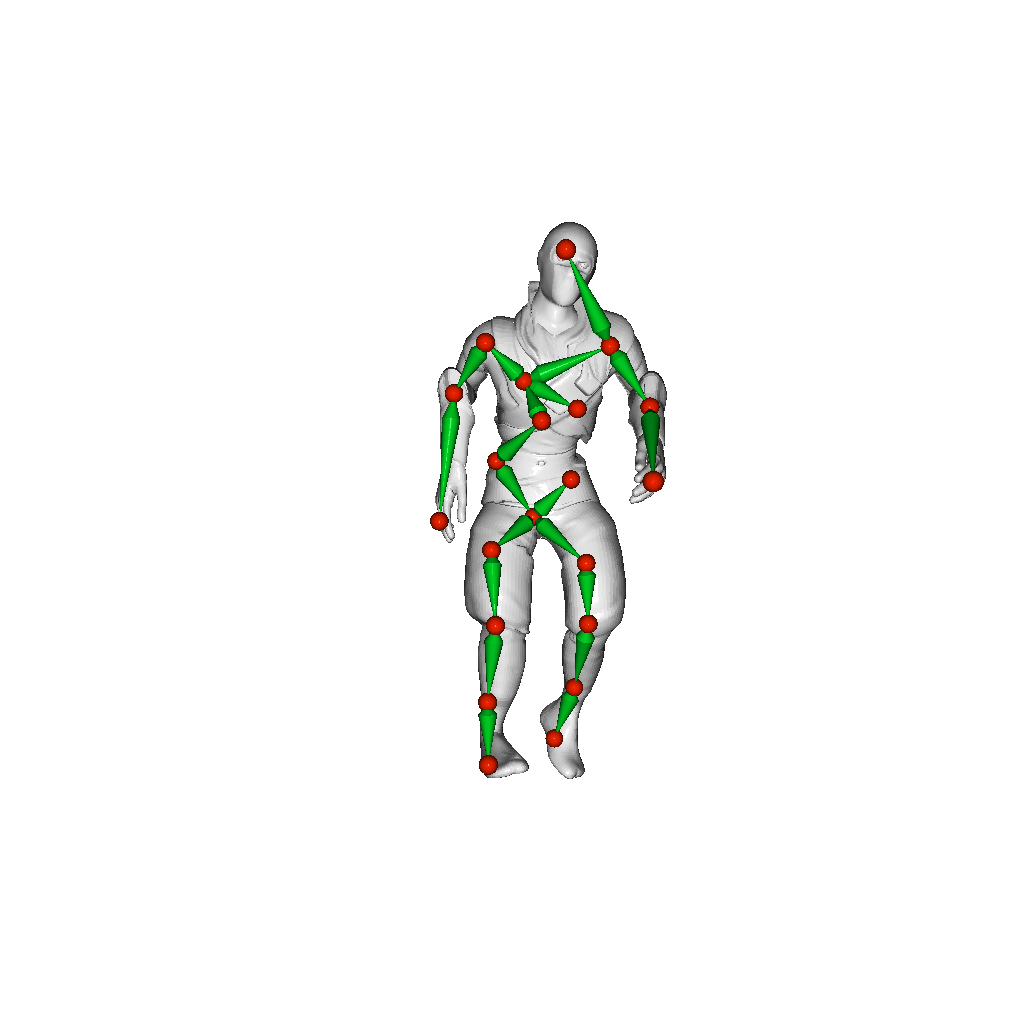This is an official pytorch code for the paper, Neural Marionette: Unsupervised Learning of Motion Skeleton and Latent Dynamics for Volumetric Video (AAAI 2022, Oral). [paper]
This work is to extract skeletal structure from volumetric observations and to learn motion dynamics from the detected skeletal motions in a fully unsupervised manner.
Our model conducts motion generation/interpolation/retargeting based on the learned latent dynamics.
We tested on Python 3.8 and Ubuntu 18.04 LTS.
The architecture is built from Pytorch 1.7.1 with Cuda 11.0.
Creating a conda environment is recommended.
## Download the repository
git clone https://github.com/jinseokbae/neural_marionette.git
cd neural_marionette
## Create conda env
conda create --name nmario python=3.8
conda activate nmario
## modify setup.sh to match your cuda setting
bash setup.shWe tested Neural Marionette with the various dataset.
Basically our model requires a raw point cloud sequence, which means no preprocessing is required.
We provide train/test split information for AIST++, D-FAUST, Animals dataset on the dataset/.
Once dataset is ready, you can train model according to pre-defined hyperparameters in dataset/config.py.
## run training code
python train.py --exp_name 'experiment_name' --dataset 'aist'Using provided pretrained model, run demo codes to visualize followings:
## Motion generation
python vis_generation.py
## Result will be stored in output/demo/generation## Motion interpolation
python vis_interpolation.py
## Result will be stored in output/demo/interpolation## Motion retargeting
python vis_retarget.py
## Result will be stored in output/demo/retargetIf our code is helpful for your research, please cite our paper:
@inproceedings{Bae2022NMARIO,
author = {Jinseok Bae, Hojun Jang, Cheol-Hui Min, Hyungun Choi, and Young Min Kim},
title = {Neural Marionette: Unsupervised Learning of Motion Skeleton and Latent Dynamics from Volumetric Video},
booktitle = {Proceedings of the 36th AAAI Conference on Artificial Intelligence (AAAI 2022)},
month = {February},
year = {2022}
}


